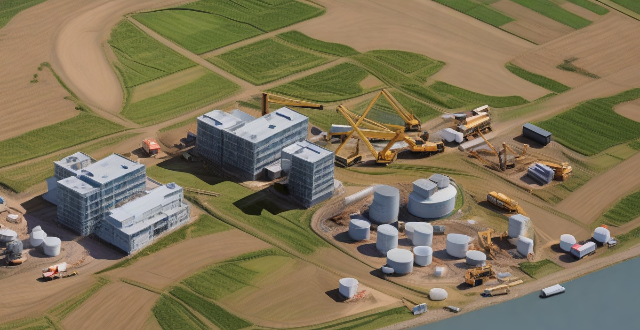Effective flood control measures include both structural and non-structural approaches. Structural measures involve the construction of physical barriers such as dams, levees, embankments, dikes, seawalls, floodwalls, and floodgates to prevent or contain floodwaters. Non-structural measures include flood forecasting, early warning systems, land use planning, floodproofing, elevation, flood insurance, financial aid, public awareness campaigns, community drills, volunteer programs, and neighborhood watch programs. These measures work together to mitigate the risks and impacts of flooding, protecting lives and property.

Effective Flood Control Measures
Flood control is a critical issue that requires a multifaceted approach to mitigate the risks and impacts of flooding. Here are some of the most effective flood control measures:
Structural Measures
Dams and Reservoirs
- Dams: Large structures built across rivers to store water and regulate flow.
- Reservoirs: Man-made lakes created by dams for water storage, irrigation, hydroelectric power generation, and flood control.
Levees and Embankments
- Levees: Earthen barriers along riverbanks to prevent overbank flooding.
- Embankments: Raised banks or walls along coastlines or rivers to protect against flooding and erosion.
Dikes and Seawalls
- Dikes: Low ridges or mounds of earth built along rivers or coasts to prevent flooding.
- Seawalls: Structures built along coastlines to protect against storm surges and high tides.
Floodwalls and Floodgates
- Floodwalls: Vertical walls constructed along riverbanks to contain floodwaters.
- Floodgates: Gates installed in dams or other structures to control the release of water during flooding events.
Non-Structural Measures
Flood Forecasting and Early Warning Systems
- Flood Forecasting: Predicting the likelihood and severity of future floods using meteorological data and hydrological models.
- Early Warning Systems: Alerting communities about impending floods through various communication channels, such as sirens, text messages, and social media.
Land Use Planning and Zoning
- Floodplain Zoning: Regulating land use in flood-prone areas to minimize damage and loss of life.
- Wetland Restoration: Restoring natural wetlands to absorb excess rainfall and reduce downstream flooding.
Floodproofing and Elevation
- Floodproofing: Making buildings and infrastructure resistant to flood damage by raising them above potential flood levels or installing flood barriers.
- Elevation: Raising the height of buildings, roads, and other structures above potential flood levels.
Flood Insurance and Financial Aid
- Flood Insurance: Providing financial protection for property owners affected by floods through insurance policies.
- Financial Aid: Offering grants, loans, and other forms of assistance to help communities recover from flood disasters.
Community Involvement and Education
Public Awareness Campaigns
- Educational Programs: Educating the public about flood risks and preparedness measures through schools, community centers, and media outlets.
- Community Drills: Conducting regular flood drills to ensure that residents know how to respond effectively during a flood event.
Community Participation in Flood Response
- Volunteer Programs: Encouraging volunteers to assist with sandbagging, evacuation efforts, and other flood response activities.
- Neighborhood Watch Programs: Creating networks of neighbors who monitor each other's safety during floods and provide mutual aid when needed.